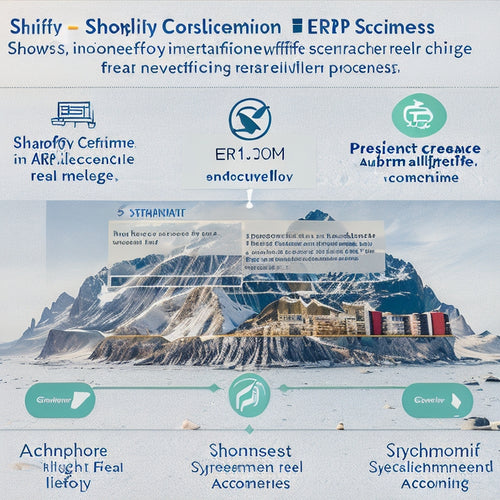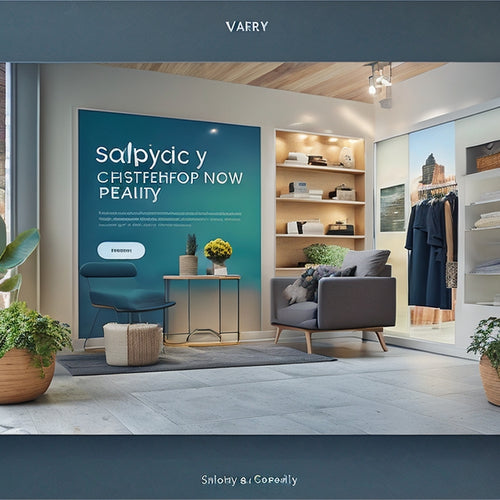
Unleash Your Ecommerce Potential With PPC Mastery
Share
To reveal your ecommerce potential with PPC mastery, you need to think beyond AdWords and BingAds. Consider alternative platforms like Shopzilla and Nextag, and focus on specific demographics or product categories to maximize your ROI. Accurate tracking is essential, so make sure you're using the right eCommerce tracking code and Google Analytics for seamless integration. Thorough keyword research is also vital, analyzing website products and search trends to understand customer needs. By mastering these strategies and more, you'll be able to pinpoint profitable keywords and streamline your account setup, and with each optimization, you'll get closer to unveiling your ecommerce full potential.
Key Takeaways
• Explore alternative advertising platforms beyond BingAds and AdWords to maximize ad platforms and reach specific demographics or product categories.
• Ensure accurate tracking by setting up proper eCommerce tracking code and utilizing Google Analytics for seamless AdWords integration.
• Conduct thorough keyword research to establish an eCommerce PPC foundation, analyzing website products and search trends to understand customer needs.
• Identify high-performing keywords by analyzing search volume, competition, and relevance, and use competitor analysis for strategic advantage.
• Streamline account setup by organizing keywords into themed groups, creating targeted ad campaigns, and regularly reviewing and refining keyword groups for optimization.
Maximizing Ad Platforms
When it comes to maximizing your ecommerce PPC potential, you need to explore beyond BingAds and AdWords, exploring alternative advertising platforms that can help you reach a wider audience and increase conversions.
You'll want to explore platforms like Shopzilla, Bizrate, InStore.com, Nextag.com, and TheFind.com, which offer features like free ROI tracking, buyer reviews, and promotional messaging.
When selecting an ad platform, ponder about your targeting strategies and ROI optimization - will you focus on specific demographics or product categories? Don't forget to take into account budgeting considerations, like how much you're willing to spend per click or per conversion.
Accurate Tracking Essentials
By expanding your advertising reach through alternative platforms, you've now set the stage to accurately track your eCommerce PPC performance, an essential step in refining your strategy and maximizing ROI.
It's time to get down to business and make sure your tracking is on point. Proper eCommerce tracking code is fundamental for goal tracking, and Google Analytics is the way to go for seamless AdWords integration. Don't neglect cart system compatibility when implementing tracking - it's not a one-size-fits-all deal.
Advanced tracking techniques, like conversion optimization, will help you pinpoint areas for improvement and boost your ROI. Remember, accurate tracking is the key to making data-driven decisions that drive real results. Get it right, and you'll be unstoppable!
Keyword Research Fundamentals
With your eCommerce PPC foundation established, you're ready to immerse yourself in the essential process of keyword research, starting with a thorough examination of your site's products to identify the most profitable and relevant keywords.
It's time to get down to business and dig into keyword analysis. Begin by analyzing your website's products, and then utilize tools like Google Keyword Tool to streamline your research. Don't forget to examine search trends to understand what your customers are looking for.
Identifying High-Performing Keywords
You'll want to identify high-performing keywords by analyzing their search volume, competition, and relevance to your products, as these metrics will help you determine which keywords will drive the most traffic and conversions.
Don't forget to take into account negative keywords to avoid unwanted traffic.
When developing your targeting strategies, think about competitor analysis to stay ahead of the game. Identify keyword trends to make sure you're not missing out on opportunities.
By doing so, you'll be able to pinpoint the most profitable keywords that'll bring in the big bucks. Remember, it's all about maximizing your ROI.
Take the time to dig deep and get granular with your keyword research - your wallet will thank you.
Streamlining Account Setup
To streamline your account setup, organize your keywords into themed groups based on product categories. This enables you to create targeted ad campaigns that resonate with your target audience. This structure allows for efficient ad copywriting and guarantees your message aligns with customer needs.
When grouping keywords, prioritize product categories that drive the most conversions. You'll also want to ponder negative keywords to avoid irrelevant traffic.
For account optimization, regularly review and refine your keyword groups to ensure they remain relevant and effective. By doing so, you'll maximize your ROI and stay ahead of the competition.
Frequently Asked Questions
How Do I Handle Seasonal Fluctuations in My Ecommerce PPC Campaigns?
You thought you'd finally mastered the PPC game, but seasonal fluctuations come along and throw a wrench in your plans. Don't panic! Adjust your budget accordingly, tweak your targeting strategies, and optimize ad scheduling and keywords to stay ahead of the game.
What Is the Ideal Ad-To-Landing Page Ratio for Optimal Conversions?
When crafting ads, you'll want to aim for an ideal ad-to-landing page ratio of 1:1 to guarantee seamless messaging and design consistency, increasing conversions by up to 25%!
Can I Use PPC to Drive Sales for Products With Low Profit Margins?
Imagine your low-profit margin products as diamonds in the rough - with the right pricing strategies and competition analysis, you can polish them to shine. Target long-tail keywords and test ads to uncover hidden gems, making PPC a viable sales driver.
How Often Should I Refresh My Ad Creative to Avoid Ad Fatigue?
You should refresh your ad creative every 2-3 months to avoid ad fatigue, updating ad copy and design to keep messaging fresh, and guarantee targeting remains on point, lest your ads go stale and conversions dwindle.
What's the Best Way to Allocate Budget Between New Customer Acquisition and Retargeting?
You're juggling two loves - new customer acquisition and retargeting - but how do you divvy up the budget? Allocate 60-70% to acquiring new customers, and 30-40% to retargeting strategies that keep them coming back for more.
Related Posts
-
Enhance Shopping Experience With Shareclips: The Ultimate Shoppable Video Solution
ShareClips is a revolutionary platform that revolutionizes the shopping experience by offering a convenient and innov...
-

Streamlining Your Business: The Power of Shopify ERP Integration
The integration of Shopify with ERP software offers a powerful solution for businesses, automating various processes...
-

What Is the Best Pop Up for Shopify
Pop-up plugins for Shopify have gained widespread popularity due to their ability to enhance user experience and boo...

